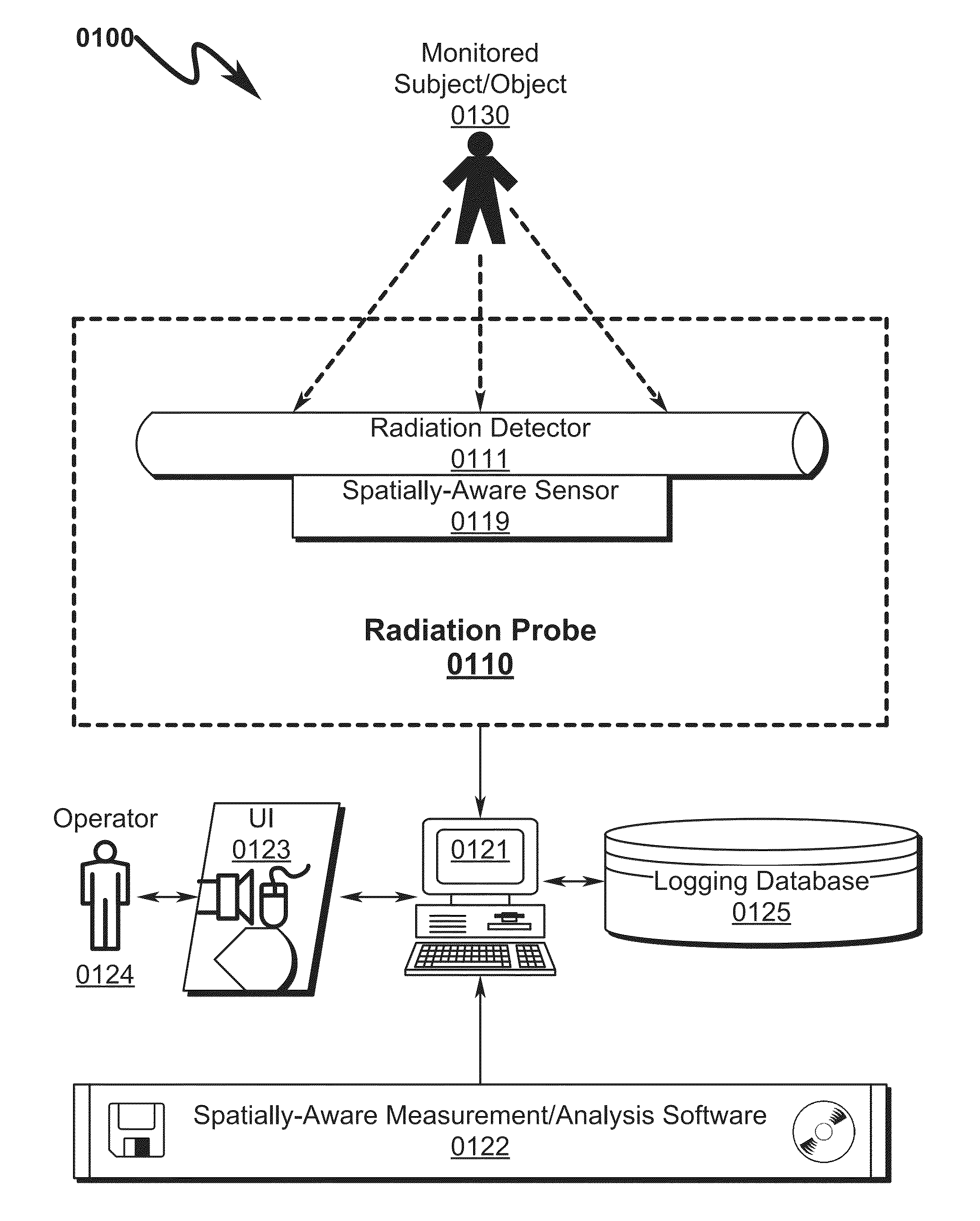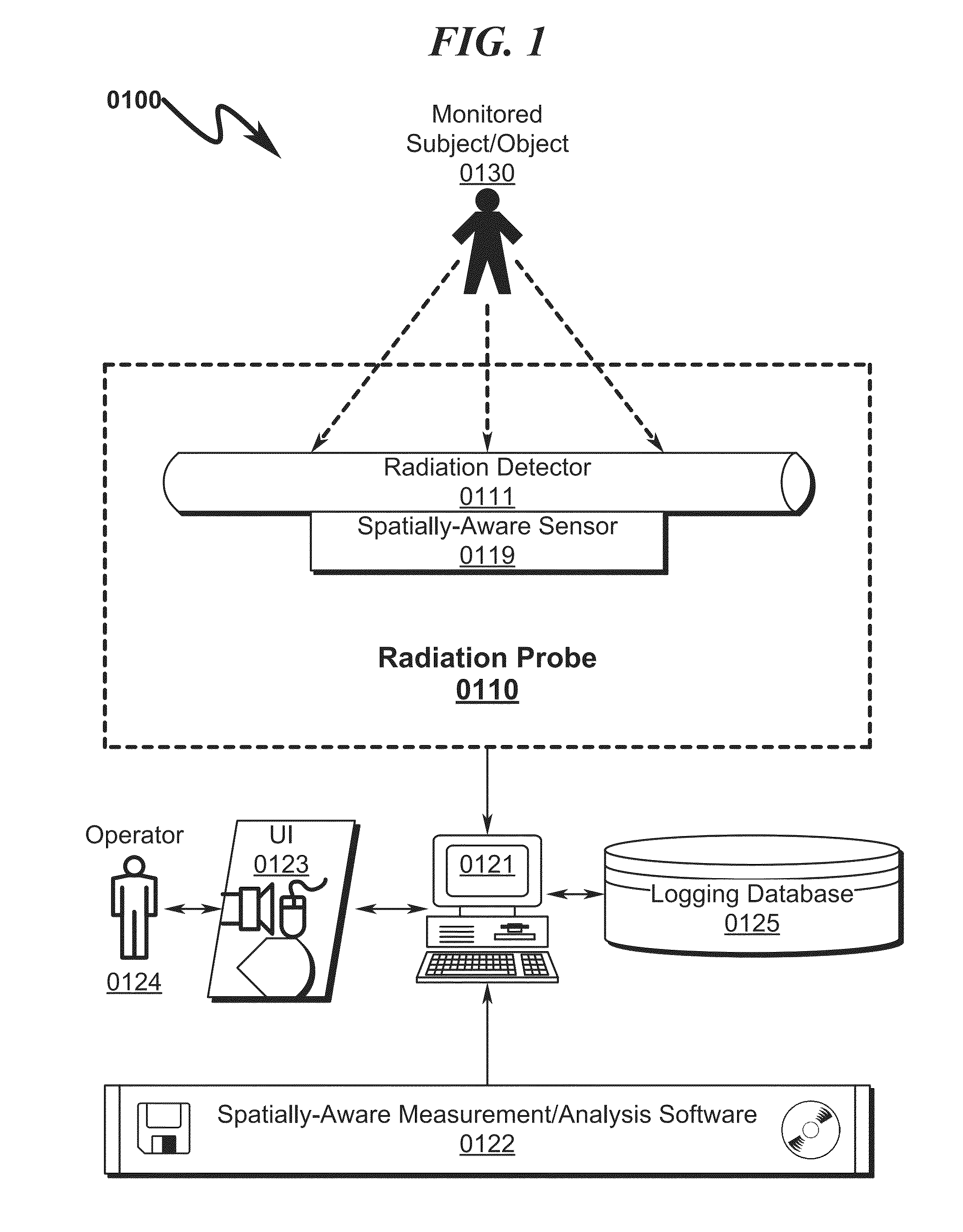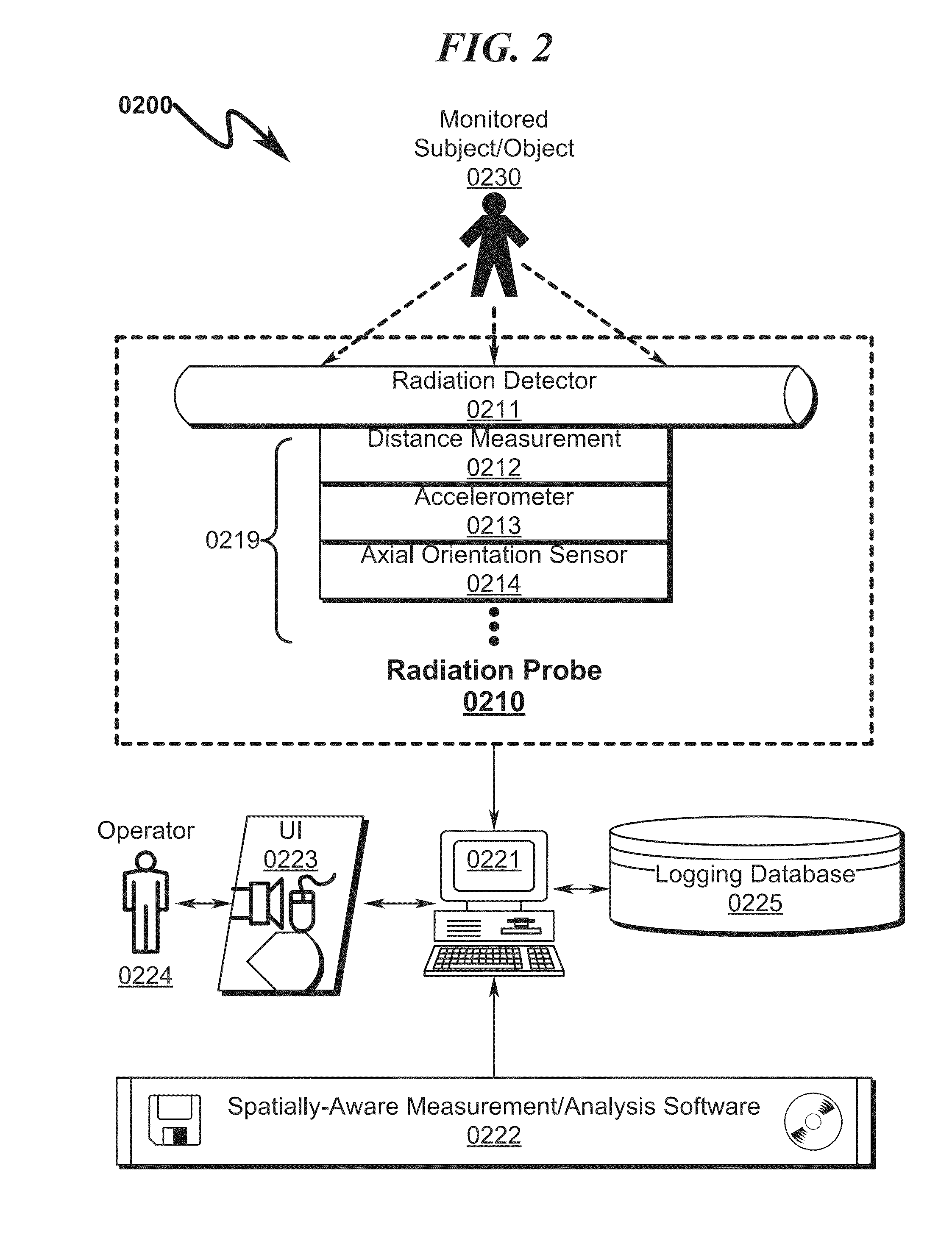Spatially-aware radiation probe system and method
a radiation probe and spatial awareness technology, applied in the field of spatial awareness radiation probe systems and methods, can solve the problems of adversely affecting the radiation measurement, and the spatial context in which the radiation measurement takes place, so as to achieve accurate and repeatable radiation measurement results, the effect of minimizing errors
- Summary
- Abstract
- Description
- Claims
- Application Information
AI Technical Summary
Benefits of technology
Problems solved by technology
Method used
Image
Examples
embodiment
Preferred Embodiment Method Summary
[0225]The present invention preferred exemplary method embodiment anticipates a wide variety of variations in the basic theme of implementation, but can be generalized as a spatially-aware radiation probe method comprising:[0226](1) measuring radiation of a monitored subject / object using a radiation detector (RD) to generate measured radiation parameters;[0227](2) detecting the spatial context of the radiation detector and / or monitored subject / object using a spatially-aware sensor (SAS) to generate spatial context parameters;[0228](3) transmitting the measured radiation and spatial context parameters to a computing device (CD) for analysis;[0229](4) analyzing the measured radiation parameters using the spatial context parameters;[0230](5) based on the analysis, determining if corrective operator action is required, and if not, proceeding to step (8);[0231](6) retrieving operator coordination instructions from an operator measurement coordination da...
PUM
 Login to View More
Login to View More Abstract
Description
Claims
Application Information
 Login to View More
Login to View More - R&D
- Intellectual Property
- Life Sciences
- Materials
- Tech Scout
- Unparalleled Data Quality
- Higher Quality Content
- 60% Fewer Hallucinations
Browse by: Latest US Patents, China's latest patents, Technical Efficacy Thesaurus, Application Domain, Technology Topic, Popular Technical Reports.
© 2025 PatSnap. All rights reserved.Legal|Privacy policy|Modern Slavery Act Transparency Statement|Sitemap|About US| Contact US: help@patsnap.com



